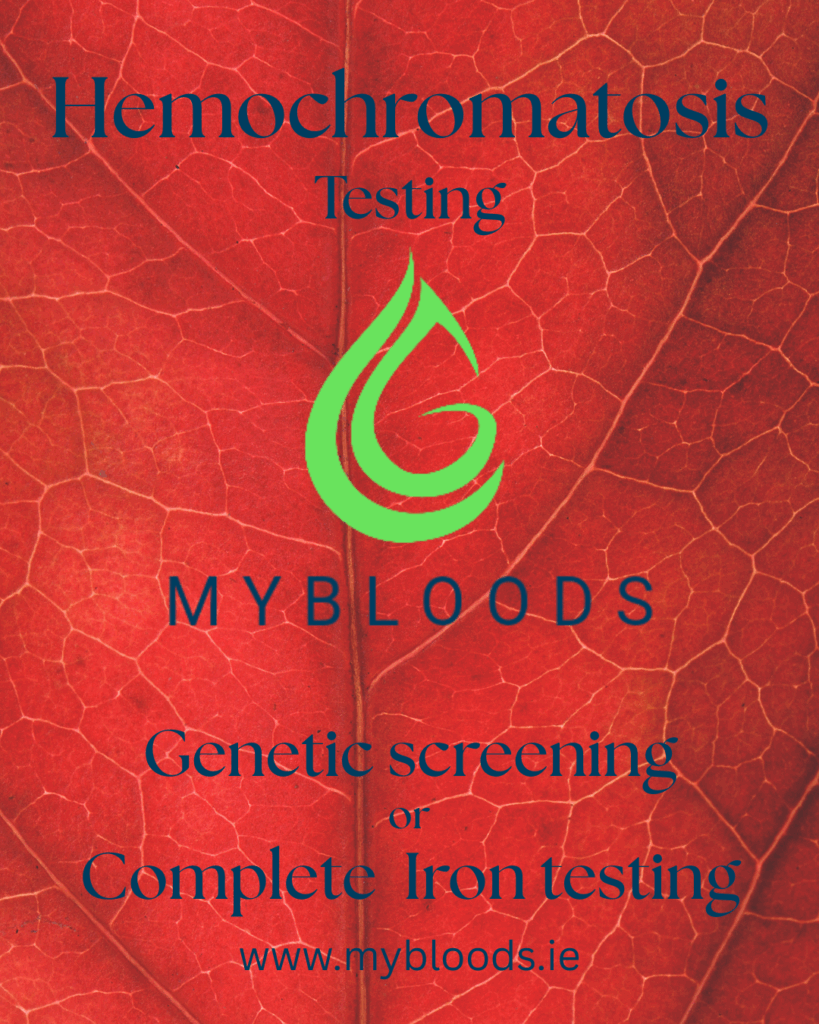
Testing for Haemochromatosis: What You Need to Know
Haemochromatosis, often referred to as the “Celtic Curse,” is one of the most common genetic conditions in Ireland. This disorder leads to excessive absorption of iron in the body, potentially causing significant health issues if left untreated. Regular testing for haemochromatosis is essential for early detection and management, particularly for those with a family history of the condition.
What is Haemochromatosis?
Haemochromatosis is a genetic condition where the body absorbs too much iron from food. Over time, this excess iron is deposited in various organs, including the liver, heart, and pancreas, leading to complications such as:
Liver disease (including cirrhosis and liver cancer)
Diabetes
Heart abnormalities
Joint pain and arthritis
The condition is particularly prevalent in Ireland, with studies suggesting that up to 1 in 83 people carry two copies of the gene mutation (HFE gene) associated with haemochromatosis. The high prevalence may be linked to genetic evolution, as iron overload could have been advantageous in iron-deficient diets of ancient populations.
Understanding Iron Testing Panels
Testing for haemochromatosis typically begins with a comprehensive iron testing panel. Each component of this panel provides crucial insights into iron metabolism and potential overload:
1. Serum Ferritin
Serum ferritin measures the amount of stored iron in the body. Elevated levels can indicate iron overload but may also result from inflammation or other conditions. It’s a key marker for identifying abnormal iron storage.
2. Transferrin Saturation
Transferrin saturation assesses the percentage of transferrin (a protein that transports iron in the blood) that is bound with iron. High transferrin saturation is often an early indicator of haemochromatosis.
3. Total Iron-Binding Capacity (TIBC)
TIBC measures the blood’s capacity to bind iron with transferrin. Lower levels are often observed in cases of iron overload.
4. Serum Iron
This test determines the amount of circulating iron in the bloodstream. While useful, serum iron levels can fluctuate, so they’re best interpreted alongside other markers.
Genetic Testing for Haemochromatosis
For a definitive diagnosis, genetic testing can identify mutations in the HFE gene. The two most common mutations associated with haemochromatosis are C282Y and H63D:
Homozygous C282Y: The most common genetic pattern linked to haemochromatosis.
Compound Heterozygous (C282Y and H63D): Can also lead to the condition, though typically less severe.
Genetic testing is particularly recommended for individuals with a family history of the condition or elevated markers from an iron panel test.
Why Test for Haemochromatosis?
Early detection is critical to prevent complications. Testing enables:
Early Intervention: Treatment, such as regular phlebotomy (blood removal), can prevent organ damage.
Family Screening: Identifying at-risk relatives who may benefit from testing.
Improved Quality of Life: Managing symptoms and reducing the risk of severe health outcomes.
Getting Tested
Our blood testing services offer comprehensive iron panels and genetic testing for haemochromatosis. Testing is simple, accurate, and convenient. You can schedule an appointment today and take control of your health
Haemochromatosis is a manageable condition with early detection. Understanding the role of iron testing panels and genetic screening can empower individuals to seek timely interventions. With its high prevalence in Ireland, regular testing is a wise choice for many.
#Haemochromatosis #IronOverload #HealthTesting #BloodTests #GeneticTesting #CelticCurse #HealthAwareness #IronTesting #IrishHealth